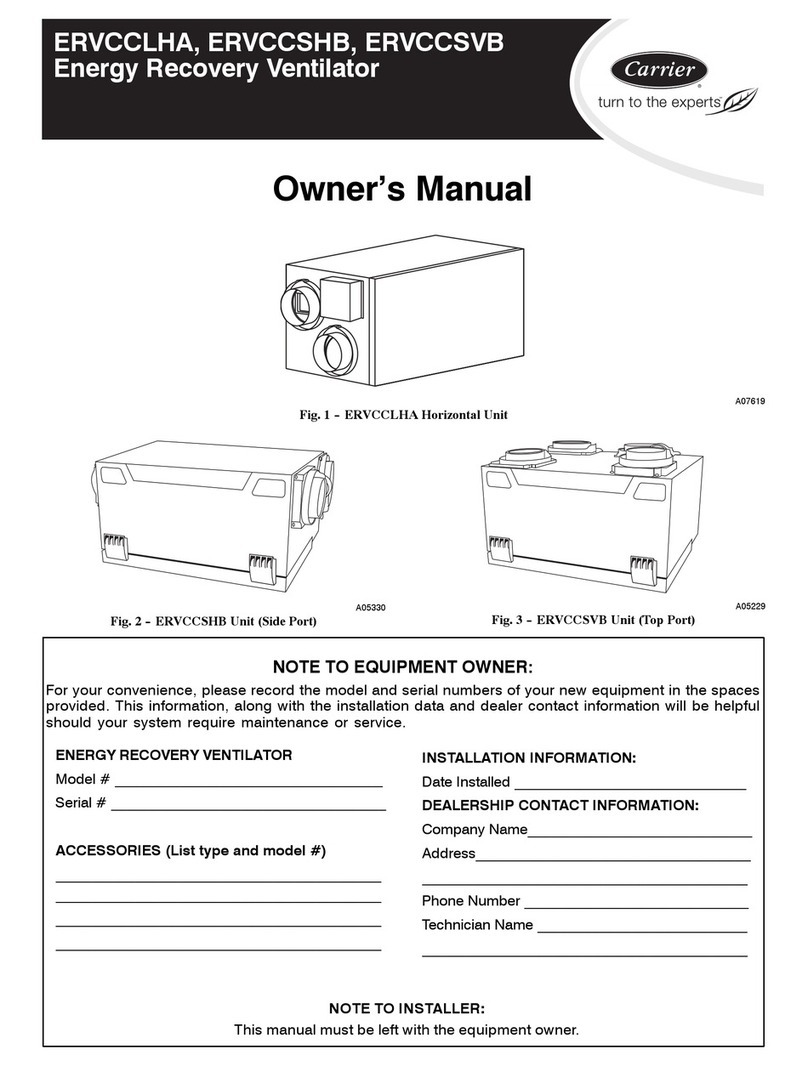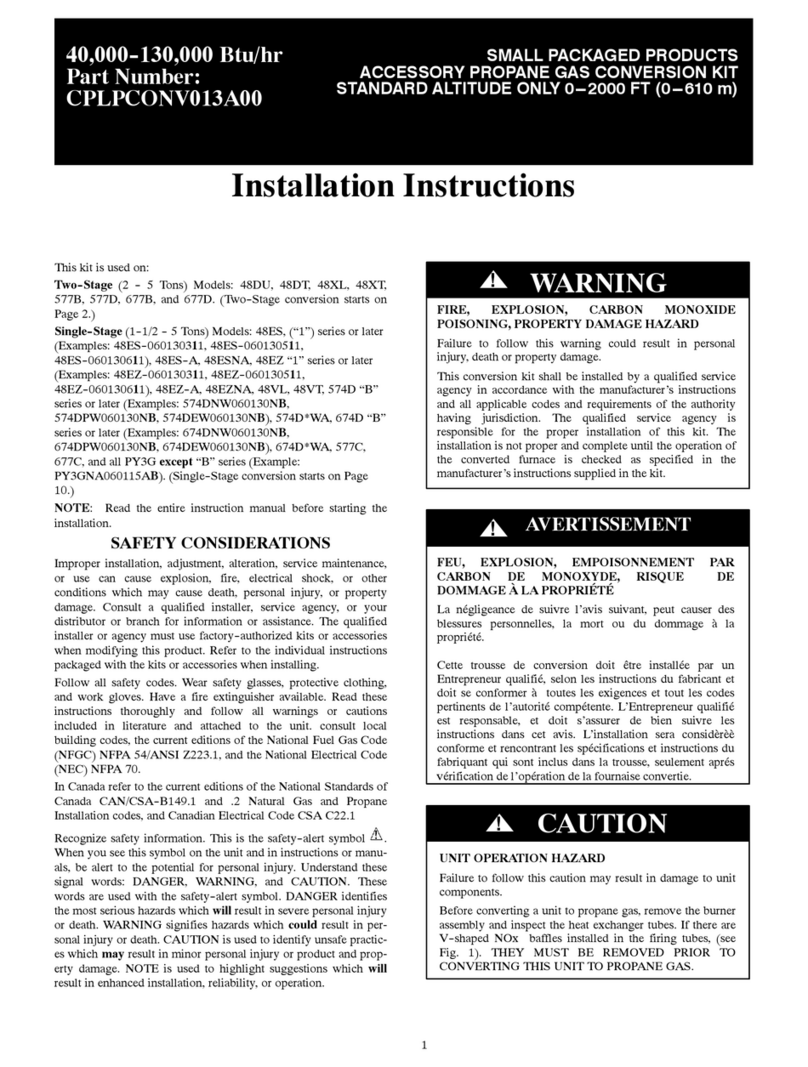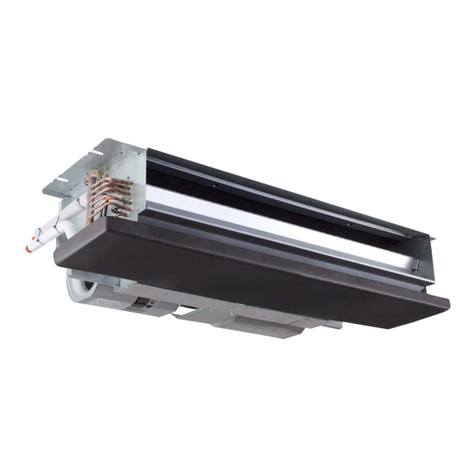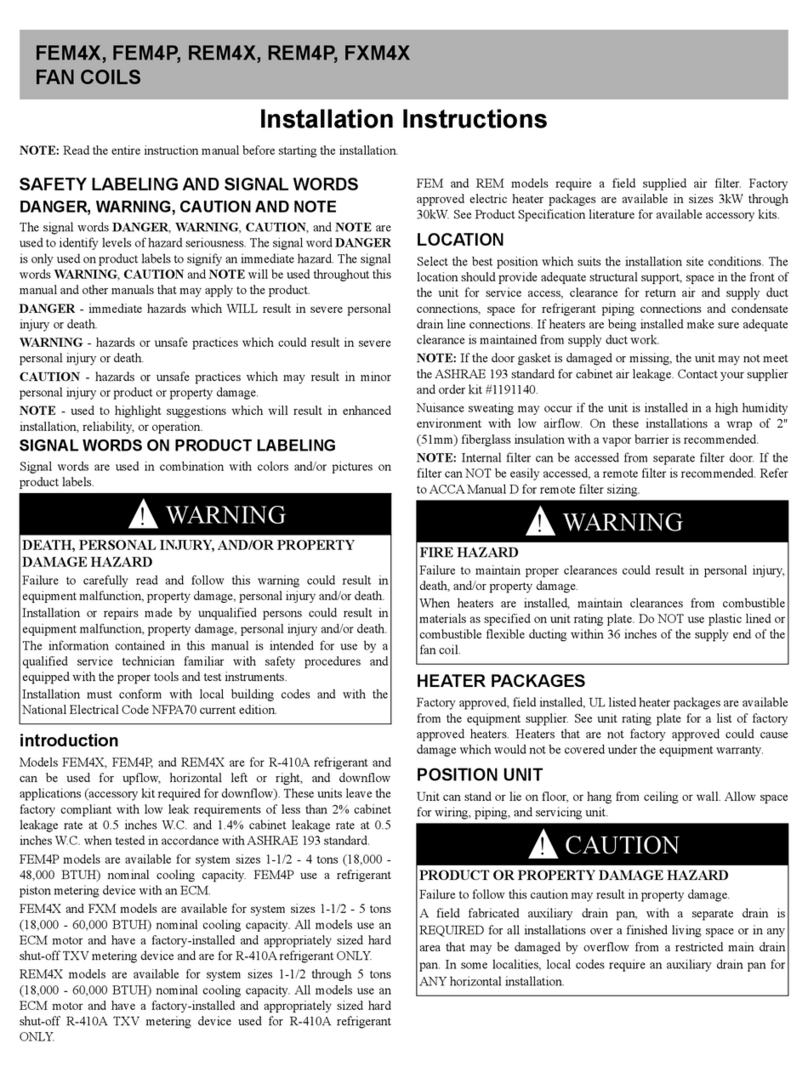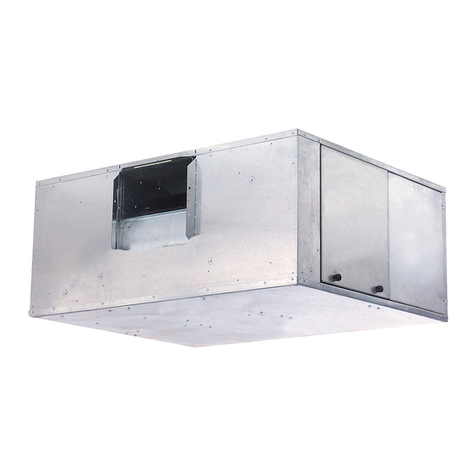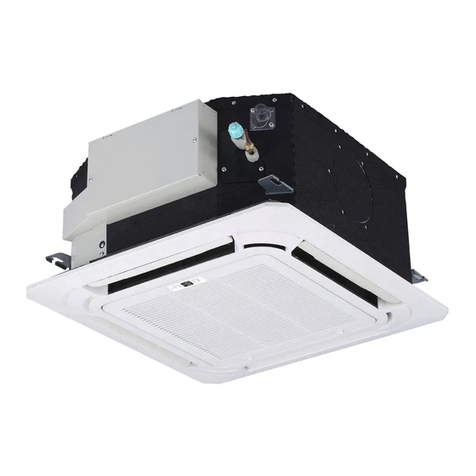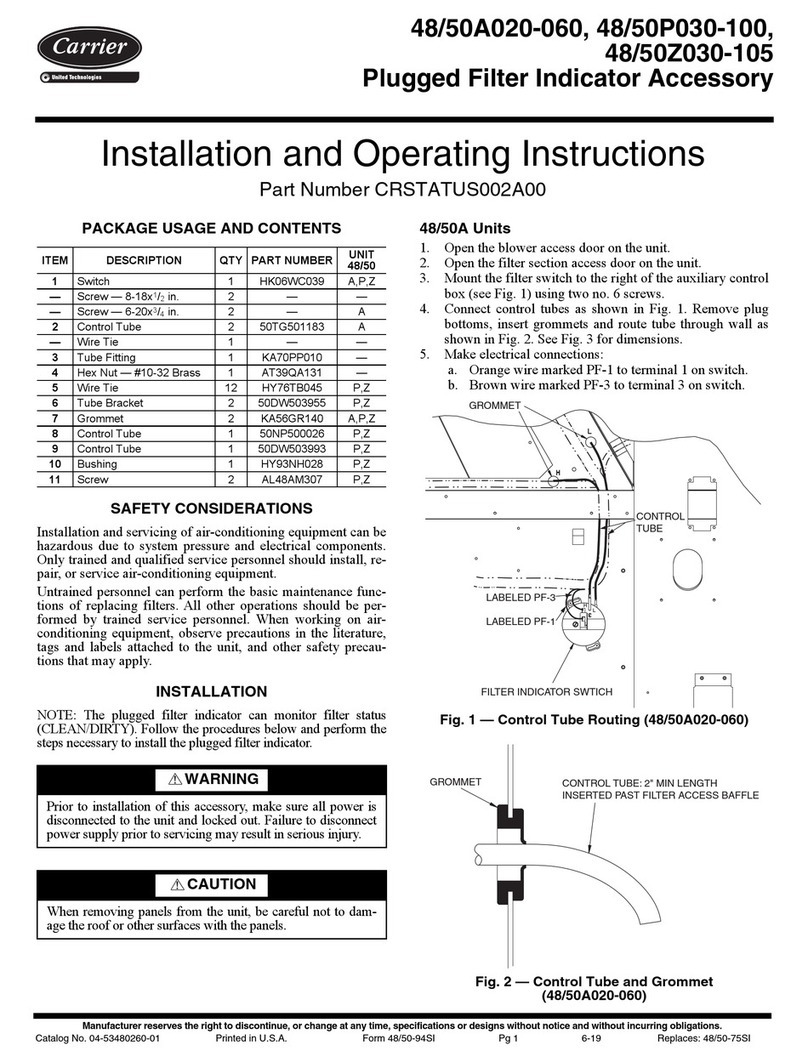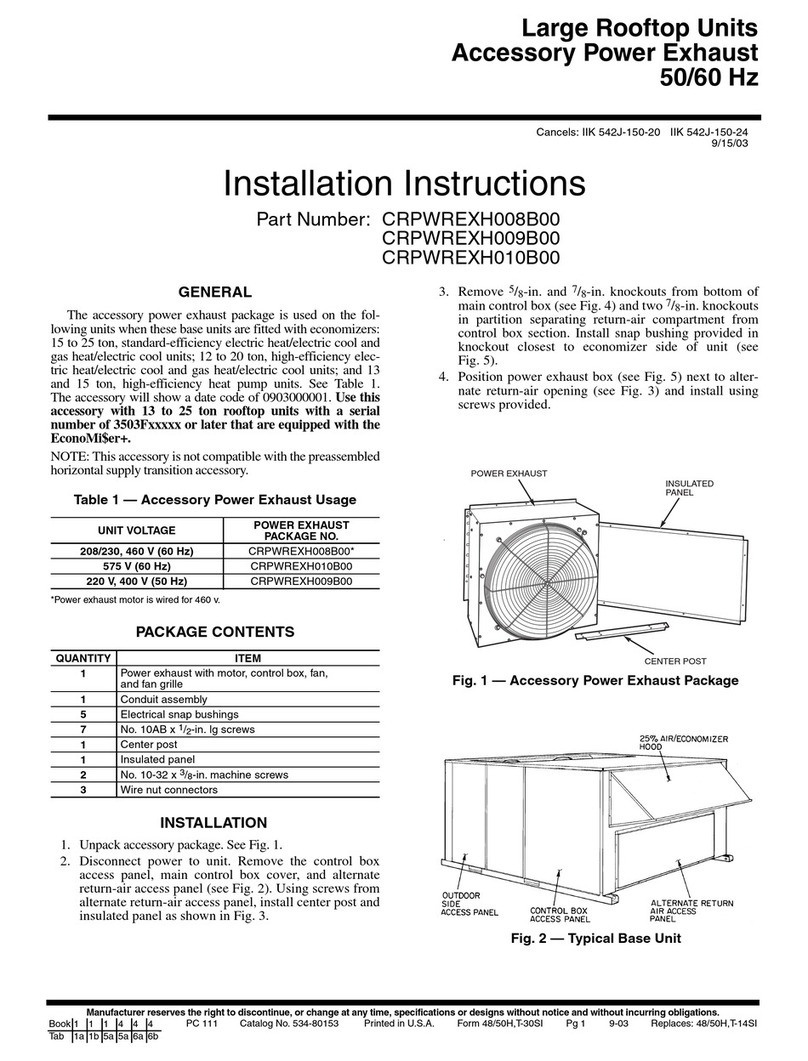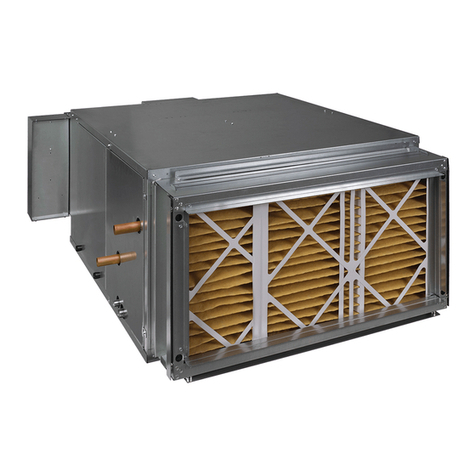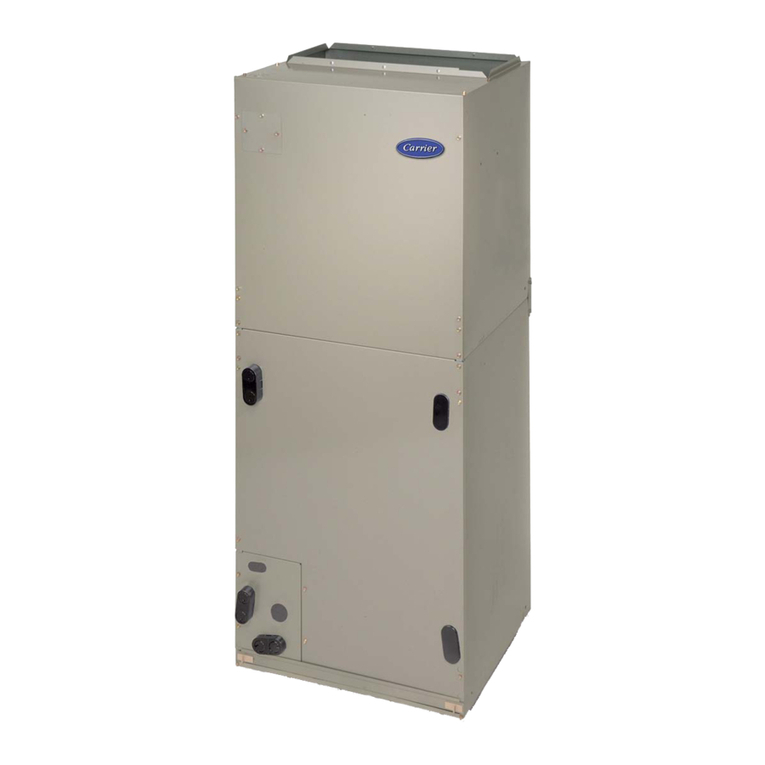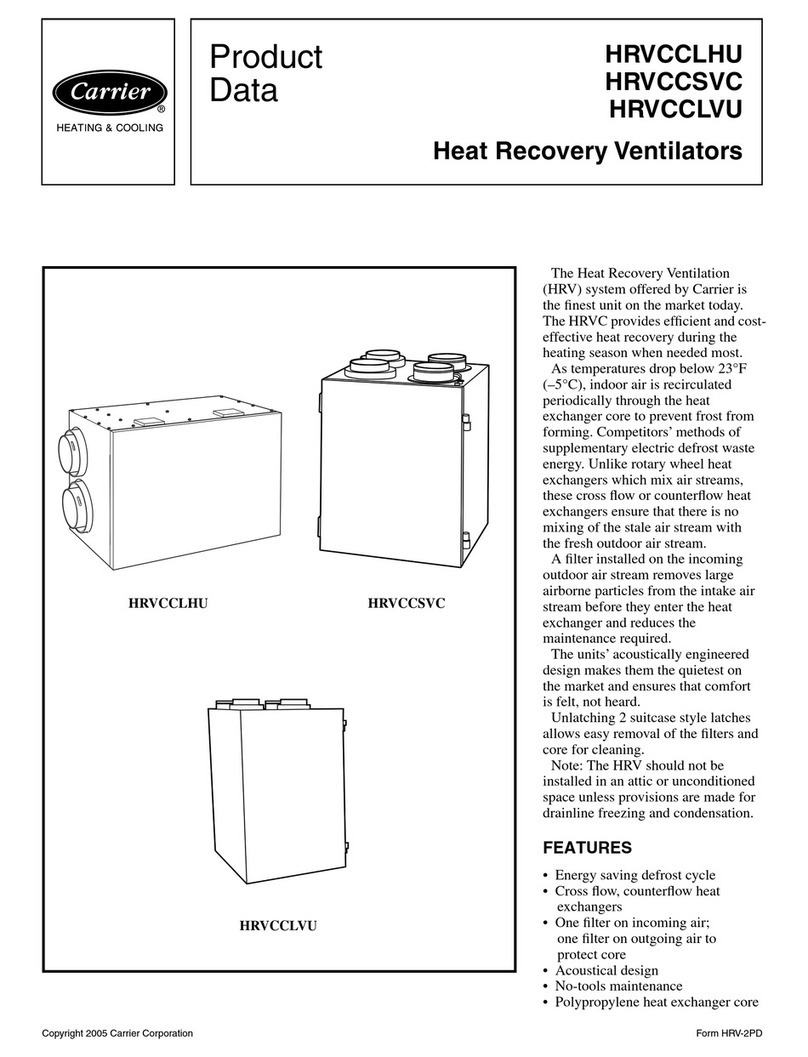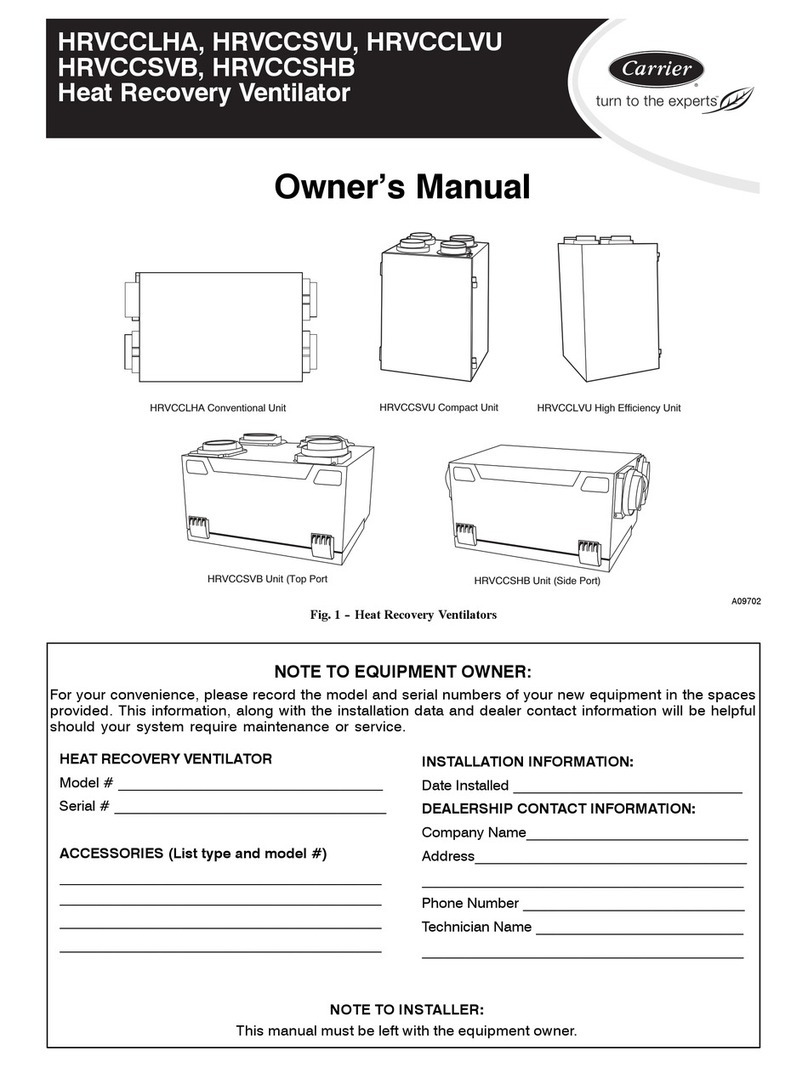Make Piping Connections -- Access to piping is
available throughthe accesspanels at the front, top, or end of
the vertical unit (horizontal accessfrom bottomor side). Route
piping through the pipe tunnel or the unit's back panel or floor
panel. Metal blank-off panels must be trimmed to complete
piping installation. All piping connections must be performed
by qualified personnel in accordance with local and national
codes.
DRAIN CONNECTIONS -- Condensate drain connections
are located on each end of the drain pan near the bottom of the
unit. Condensate drain line must be 3/4 in. copper tubing,
galvanized pipe, PVC or similar plastic pipe. Install drain line
maccordance with all applicable codes. Insulate the drain
line to prevent sweating. See Fig. 6for typical drain trap
construction.
Units with cooling coils require traps to prevent air from
entering the condensate fitting and preventing proper drainage.
Drain must flow downhill from the unit a minimum of Vs in.
per ft_Drain must be free and clear at all times.
3/4"
PVC OR COPPER 3/4=
GALVANIZED PiPE
3" MIN
2" MIN
Fig. 6 -- Typical Condensate Drain Trap
Construction
EQUAL[ZER
SENSING BULB (CLAMPED TO
SUCTION LINE AND INSULATEDI
SUCTION LINE
Insulate drain lines to prevent condensate. Care must be
taken to avoid interference with control panel on left side
drain. LIQUID LINE
WATER SUPPLY/RETURN CONNECTIONS -- Install pip-
mg in accordance with all applicable codes. All piping must be
supported separately from coils.
Water supply must be connected so thatentering water is on
leaving-air side of coil. See the connection labels on the unit to
locate the inlet. Coils must be adequately vented to prevent air
binding. Be sure valves are in proper operating position and are
easily accessible for adjustment.
If coil and valve package connections will be made with a
solder joint, care should be taken to ensure that components in
the valve package are not subjected to high temperatures winch
may damage seals or other materials. Many 2-position electric
control valves are provided with a manual operating lever. This
lever should be in the OPEN position during all soldering
operations.
If coil connection is made with a union, the coil side of the
union must be prevented from taming (it must be backed up)
during tightening. Do not overtighten! Overaghtening will dis-
tort (egg shape) the union seal surface and destroy the unior_
NOTE: A freezestat is factory-installed when a hot water/steam
coil is installed.
STEAM CONNECTIONS -- On units with steam heating
coils, the maximum steam pressure applied to the unit should
never exceed 10 psig (operating pressure 6 psig).
DIRECT EXPANSION REFRIGERANT PIPING -- Use the
condensing unit manufacturer's recomrt_nded line sizes and
requirements. Perform leak test using nitrogen. Evacuate and
charge per recommended heating, ventilation, and air condi-
tioning (HVAC) procedures and all applicable codes. Insulate
suction hne after leak test up to the coil section end plate for
correct operation and to eliminate sweating. Use refrigerant-
grade copper lines only. The unit is NOT to be applied as a
heat pump.
See Fig. 7 for refrigerant piping connections with recom-
mended locations for the thermostatic expansion valve (TXV)
and sensing bulb.
HYDRONIC COIL PIPING -- When all joints am complete,
perform hydrostatic test for leaks. Vent all coils at this time.
Check interior unit piping for signs of leakage from shipping
damage or mishandling. If leaks are found, notify a Cartier
representative before initiating any repatrs. Release trapped air
from system (refer to Make Final Preparations section).
NOTE:FollowTXVmanufacturer'sinstructions.
Fig. 7 -- Typical TXV (Thermostatic Expansion
Valve) Installation
All water coils must be protected from freezing after initial
filling with water. Even if system is drained, unit coils may
still have enough remaining water to cause damage when
exposed to temperatmes below freezing.
Following the hydrostatic test, insulate all piping up to the
coil section end plate to prevent sweating.
To ensure compliance with building codes, restore the struc-
ture's original fire resistance rating by sealing all holes with
material carrying the same fire rating as the structure.
Make Electrical Connections -- Refer to unit serial
plate for required supply voltage, fan and heater amperage and
required circuit ampacities. Refer to unit wiring diagram for
unit and field wiring. See Tables 2M.for electrical data.
All input power wiring connections are accessed through
the electrical panel on front right-hand side of the unit. Use the
openings that am for the piping connections. See the dimen-
sional drawings Fig. 1-5 for electrical box connections.
The fan motor should never be controlled by any wiring or
device other than the factory-supplied switch or thermostat/
switch combination unless prior factory authorization is ob-
tained. Fan motor may be temporarily wired for use during
construction only with prior factory approval and only in strict
accordance with the instructions issued at that time.
All electrical connections should be made by qualified per-
sonnel and be in accordance with governing codes and ordinanc-
es. Any modification of unit wiring without factory authorization
will invalidate all factor 3,warranties and nullify any agency list-
ings. See Fig. 8A and 8B for typical wiring connections for basic
unit without CCN (Carder Comfort Networlc_) controls.
Actuators (Field-Supplied) -- Field-supplied actuators
must be mounted on 1/2in.diameter damper shafts.
